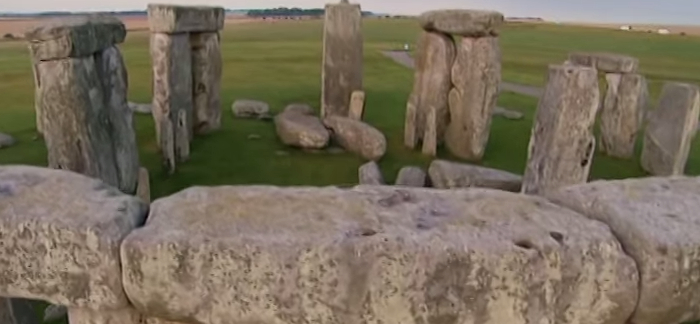There are many monuments from ancient history that speak of the ingenuity of those who have come before. None, however, may be as mysterious as Stonehenge. Often thought to have been a site with spiritual significance, recent surveys of the underground have location almost 20 different temples and shrines. It really could have been one of the central locations of societal development in its era.
1. A Long Time Coming
Researchers believe that the entire complex of Stonehenge took a long time to develop. The first artifacts at the location have been dated as far back as 5,000 BC and was a place where the local population would bury those that had been cremated after death. The practice continued for the next 2,000 years until the stone circle of the central monument was eventually built.
2. What’s In That Bucket?
In the 17th century, a researcher named John Aubrey located a series of holes or pits within the Stonehenge complex that have never been fully understood, even with over 300 additional years of research. The best guess is that they used to contain posts or stones that could have been used for worship, a roof, or for supporting stones as the outer walls are supported.
3. Ages of Studying
The first mentions of Stonehenge being researched date all the way back to the year 1130. At that time, Henry of Huntingdon was chronicling the site for archaeological purposes. Geoffrey of Monmouth continued that work just 6 years later and it began to be known as Stonehenge in some form by name since. Not all of the studying has been archaeological in nature. Charles Darwin in 1888 said that the stones were sinking into the dirt because of earthworms.
4. Big and Heavy
The stones at the site, which are called “sarsens,” aren’t what someone would describe as being small. The largest one has been measured to be 30 feet tall and way over 25 tons. What is even more remarkable about these stones is that it is believed that they were obtained from Marlborough Downs, which is over 20 miles north of the site. The smaller stones at Stonehenge weigh just 4 tons and some of them have been traced back to western Wales, more than 140 miles away. No one knows how these stones made it to the site.
5. A Changing of Seasons
There have been many theories about why Stonehenge was constructed, but the ones that generate the most agreement generally involve spirituality and nature. Thousands of hunting artifacts and animal bones have been located around the site. A processional avenue discovered not only aligns with the heel stone of the site, but with the sunrise and sunset of the mid-summer solstice. Even Roman artifacts have been found around Stonehenge. Sometimes heavily used and sometimes only rarely used, it is easily one of the oldest known active sites in the world today.
6. Not the Only One
Stonehenge gets all of the credit, but it isn’t the only ancient ring of stones that can be found in the British Isles. There are more than 900 of them in various sizes that have been discovered over the years. Stonehenge is simply the most prominent one. Part of this is because of its testament to the hard work involved in creating it. Researchers estimate that it would have taken a combined 30 million hours of labor to construct the ancient site in total.
7. Go For a Visit
As one of the 7 Wonders of the Middle Ages, what makes Stonehenge so incredible is that it is open to the general public. There are annual events booked there every year and with enough influence, it’s even possible to get married at Stonehenge. Millions come to visit the site every year, but since there aren’t any records in existence which show why the site was built, everyone is left to make their own assumptions.
8. Could It Be Aliens?
Because of the great weight of the rocks, some say that the only feasible explanation about how Stonehenge was created is that aliens did it. Others think that the tall stones are grave markers. One interesting theory says that Stonehenge is actually a giant clock.
Stonehenge is being preserved as a UNESCO World Heritage Site and has undergone several renovations. Some of the boulders have even been stabilized with concrete to preserve them. If you ever get the chance to see Stonehenge, then take the opportunity. It really is one of the world’s great wonders.




